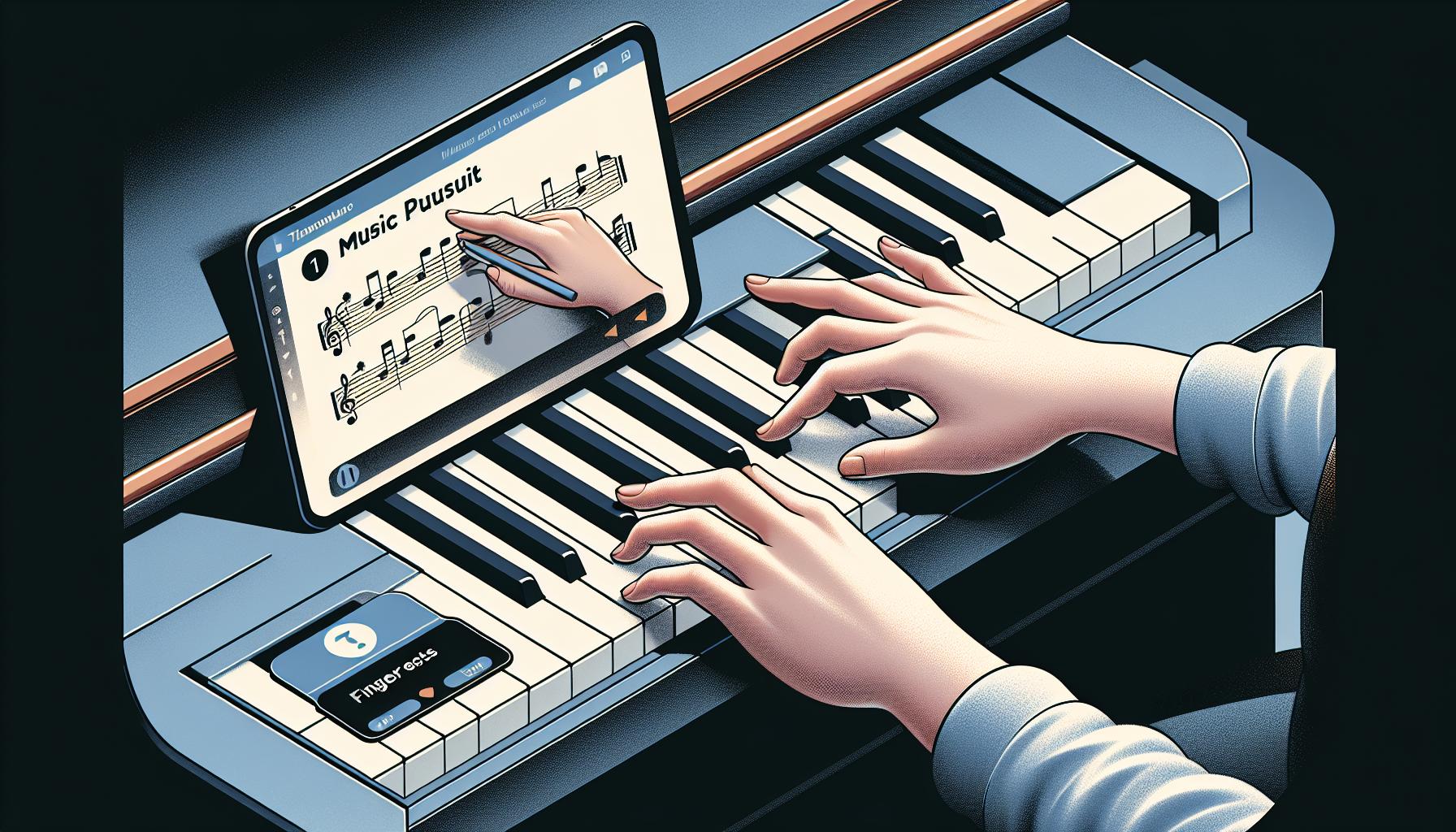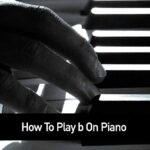Diving into the world of music can be as thrilling as it is daunting, especially for those dreaming of playing the piano but not knowing where to start. The good news is, the digital age has made learning more accessible than ever. With a plethora of free online piano lessons available, absolute beginners can embark on their musical journey from the comfort of their own home.
These online resources are tailored to cater to those who've never touched a piano before, breaking down lessons into manageable, bite-sized chunks. Whether it's mastering the basics of reading music, understanding the keyboard layout, or getting the hang of simple chords, there's something for everyone. Let's explore how these free lessons can turn your musical aspirations into reality, one note at a time.
Exploring the Benefits of Online Piano Lessons
In an era where everything is within arm's reach through the internet, learning to play the piano has also found its place in the digital world. Online piano lessons have become a beacon of hope for absolute beginners, offering them a unique opportunity to chase their musical dreams from the comfort of their own homes. Accessibility is at the forefront of these benefits, breaking down geographical barriers and making quality piano instruction available to anyone with an internet connection.
Another significant advantage of online piano lessons is the flexibility they offer. Traditional piano classes require learners to adhere to a strict schedule, which can be challenging for those juggling work, education, or family commitments. In contrast, online lessons allow learners to engage in their practice at any time that suits them, be it early morning or late at night. This flexibility ensures that learning the piano can fit into anyone's lifestyle, not the other way around.
Cost is a critical factor in pursuing any new hobby or skill, and here too, online piano lessons shine. They often present a more affordable alternative to private tuition, which can be prohibitively expensive for many. Free online piano lessons, in particular, eliminate the financial barrier to entry, allowing learners to get started without the need for a significant upfront investment. This democratization of learning resources means that more people than ever can embark on their musical journey without financial constraints standing in their way.
The variety of learning materials available online is another compelling reason to consider this route for piano education. Whether it's classical music, jazz, pop, or blues, learners can find lessons tailored to their musical preferences and skill level. This vast array of choices not only keeps the learning process engaging but also allows students to explore different genres, fostering a deeper appreciation and understanding of music.
Furthermore, technology has enabled innovations like interactive simulation software and video tutorials, which significantly enhance the learning experience. These tools provide immediate feedback on performance, allowing learners to correct mistakes in real time. This immediate feedback loop accelerates the learning process and helps maintain motivation by clearly showing progress.
Lastly, the online community of learners and educators adds a layer of support and encouragement that cannot be underestimated. Beginners have the chance to connect with more experienced players, share their progress, and even collaborate on projects, creating a sense of camaraderie and mutual growth.
| Benefit | Description |
|---|---|
| Accessibility |
Lesson Structure for Absolute Beginners

When diving into the world of free online piano lessons, newcomers may wonder about the structure these lessons typically follow. Absolute beginners need a clear, step-by-step guide to help them navigate their musical journey. Free online lessons cater to this need beautifully, showcasing a blend of flexibility and thoroughness that's hard to find elsewhere.
First off, lessons usually kick off with an introduction to the piano itself. Learners get acquainted with the names of the keys, the layout of the keyboard, and the role of foot pedals. This foundational knowledge is crucial as it supports all future learning.
Next, tutors introduce basic music theory. This includes understanding notes, rhythms, and scales. Even in online settings, interactive tools and videos make this potentially daunting subject matter engaging and digestible. For beginners, grasping these concepts early on is essential for reading music and developing timing skills.
The practical part of the lessons often begins with simple hand positioning and finger exercises. These exercises are designed to increase dexterity and comfort with the keyboard. Following this, students start playing simple songs or pieces. This approach not only boosts confidence but also provides immediate, tangible evidence of progress, which is incredibly motivating.
Another pivotal aspect is the integration of technology in these lessons. Many free online platforms offer innovative tools such as metronomes, digital music sheets, and interactive piano simulators. These resources not only make learning more fun but also more effective, offering immediate feedback and personalized learning paths.
As students progress, they're introduced to a broader variety of music genres, encouraging exploration and personal musical expression. This variety ensures that learners find the style that resonates most with them, whether it's classical, jazz, pop, or another genre.
To support ongoing learning, these lessons often incorporate quizzes and challenges. These elements gamify the learning process, making practice sessions more engaging. They also help reinforce concepts and techniques learned, ensuring students retain and can apply their newfound knowledge.
Finally, it’s not just about solo practice. Online communities and forums offer students the chance to connect with peers and instructors. Here, they can share their progress, challenges, and triumphs. These communities provide an invaluable source of support and motivation, turning an individual's learning journey into a shared experience.
Overall, the structure of free online piano lessons for absolute beginners is designed to provide a comprehensive and enjoyable start to one’s musical education.
Mastering the Basics of Reading Music

After familiarizing themselves with the layout of the piano and understanding the initial steps of hand positioning and basic exercises, students are encouraged to dive into the world of reading music. This essential skill forms the backbone of their musical journey, paving the way for them to explore a wider range of pieces as they progress.
Reading music encompasses recognizing notes on the staves, understanding rhythms, and grasping how these elements combine to create melodies and harmonies. Free online piano lessons for absolute beginners approach this challenge with a gradual, step-by-step method, ensuring that students build a strong foundation. At the outset, learners are introduced to the grand staff, comprising the treble clef (for the right hand) and the bass clef (for the left hand).
Note Identification
Identifying notes starts with memorizing the spaces and lines of each clef. Many lessons employ mnemonic devices to aid in this process. For the treble clef, phrases like "Every Good Boy Does Fine" help students remember the lines, while "FACE" represents the spaces. Similarly, for the bass clef, lines can be remembered with "Good Boys Do Fine Always," and spaces with "All Cows Eat Grass."
Rhythm Basics
Understanding rhythm involves being able to read various note values, such as whole notes, half notes, quarter notes, and so on. Lessons often integrate clapping and counting exercises that help beginners internalize the pulse and rhythm of music. This practical approach is important for developing timing and synchronization when playing the piano.
Simple Melodies
Once students grasp note identification and rhythm, they're gradually introduced to playing simple melodies. This consists of short pieces that incorporate basic notes and rhythms they have learned. These melodies are carefully selected to ensure a sense of accomplishment and motivate learners to continue exploring more complex pieces.
Technology Tools
The inclusion of technology in learning to read music cannot be understated. Many platforms offer interactive tools that allow students to practice note reading in a gamified environment. Features such as immediate feedback on accuracy and tempo help learners correct mistakes in real-time, significantly speeding up the learning process.
Practice Makes Perfect
Consistent practice is key to mastering music reading. Online lessons encourage regular engagement with reading exercises, both within the platform and through printable materials. This ensures that students not only learn during lessons but also apply and reinforce their knowledge between sessions.
Understanding Keyboard Layout

Once beginners get a grasp of reading music, the next critical step in free online piano lessons is diving into the keyboard layout. This understanding forms the foundation upon which all piano skills are built.
At first glance, a piano keyboard might seem like a complex jumble of black and white keys. Yet, with the right guidance, students quickly learn that this layout is more logical than it appears. Free online lessons for absolute beginners break down the keyboard into manageable sections, ensuring that students aren't overwhelmed.
The 88 keys of a standard piano are divided into groups of twos and threes by the black keys. This pattern is vital for navigation, providing a visual guide to identify the white keys, each corresponding to a musical note from A to G. Beginners are taught to recognize these patterns, enabling them to locate notes quickly without the need to count each key.
Recognizing Octaves and Middle C
One of the first tasks in understanding the keyboard layout is identifying octaves. An octave is a series of eight white keys, starting and ending with the same note name but at a higher pitch. Middle C, the most referenced note in beginner piano, serves as a home base. It's positioned near the center of the keyboard and acts as a point of reference for finding other notes. Free lessons emphasize the importance of locating Middle C early on, as it's crucial for both reading music and understanding the keyboard's layout.
Interactive Learning Tools
To aid in the assimilation of keyboard layout knowledge, many online piano lessons incorporate interactive tools. These may include virtual keyboards that allow learners to practice note identification and software that quizzes students on locating specific keys. This hands-on approach reinforces learning, making the virtual environment an effective tool for mastering the keyboard layout.
- Practice Sessions: Regular, guided practice using these interactive tools helps cement the relationship between musical notes and their physical location on the keyboard.
- Visual Aids: Flashcards, diagrams, and other visual aids are commonly used to supplement learning, providing a quick reference for students as they become more familiar with the keyboard.
Progressing to Simple Songs
After mastering the basics of the keyboard layout, students are gradually introduced to playing simple songs. This not only applies their knowledge of note identification and location but also starts to develop hand-eye coordination and musical timing. The choice of songs in free online lessons often reflects a careful balance between challenge and achievability, ensuring that students remain motivated and engaged.
Getting the Hang of Simple Chords

After mastering the basics of the keyboard layout and beginning to play simple songs, students are ready to dive into the world of chords, a crucial step in their musical journey. Chords form the backbone of most music genres, providing depth and harmony to melodies. Free online piano lessons offer a structured approach to learning chords, starting with the simplest forms – major and minor triads.
Major triads consist of three notes: the root note, the major third, and the perfect fifth. They're known for their bright, happy sound. In contrast, minor triads, which also consist of three notes—the root, the minor third, and the perfect fifth—produce a sadder, more reflective tone. These fundamental chord types are essential for beginners to understand as they lay the groundwork for more complex chords and harmony in music.
Free lessons leverage the familiarity students have with the keyboard to introduce chord shapes and patterns. Just as with single notes, recognizing patterns on the keyboard is pivotal for identifying and playing chords efficiently. Interactive tools and software come into play here, allowing students to practice chord formations and hear how they should sound, enhancing their auditory and muscle memory.
To help students get comfortable with playing chords, lessons often include:
- Visual aids: Diagrams and color-coded keys display chord structures clearly.
- Practice exercises: Repetitive drills that focus on transitioning between chords smoothly.
- Song practice: Simplified versions of popular songs that incorporate the chords being learned.
Incorporating songs that students love and are already familiar with keeps the learning process engaging and fun. It also demonstrates the practical application of chords in music, allowing learners to see their progress in real-time.
As students gain confidence in identifying and playing basic chords, they're introduced to the concept of chord progressions. A chord progression is a series of chords played in a sequence, which forms the harmonic foundation of a song. Understanding common progressions such as the classic I-IV-V helps students grasp song structure and prepares them for more advanced musical concepts.
Interactive quizzes and games designed to recognize and remember different chord progressions further aid in solidifying this understanding. These tools not only reinforce learning but also make the process interactive and enjoyable.
Conclusion
Embarking on the journey of learning piano online as an absolute beginner might seem daunting at first. Yet with the structured approach of understanding the keyboard layout, mastering the basics becomes an exciting adventure. The integration of interactive tools and visual aids not only makes the learning process engaging but also ensures a solid foundation is built. From recognizing notes and playing simple songs to exploring the harmony of chords, each step is designed to keep students motivated. As they progress, the world of music opens up with endless possibilities. So whether it's playing their favorite song or understanding the intricacies of musical composition, these free online piano lessons offer a comprehensive path to musical mastery.
Harlan Kilstein began playing piano during covid with no piano background at all. He taught himself how to play learning what to do and what not to do.
Today he's an advanced intermediate player and can help you grow in your skills because he learned all this on his own.








